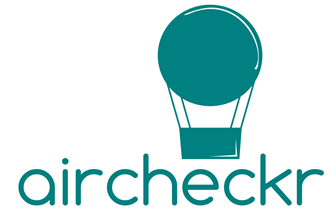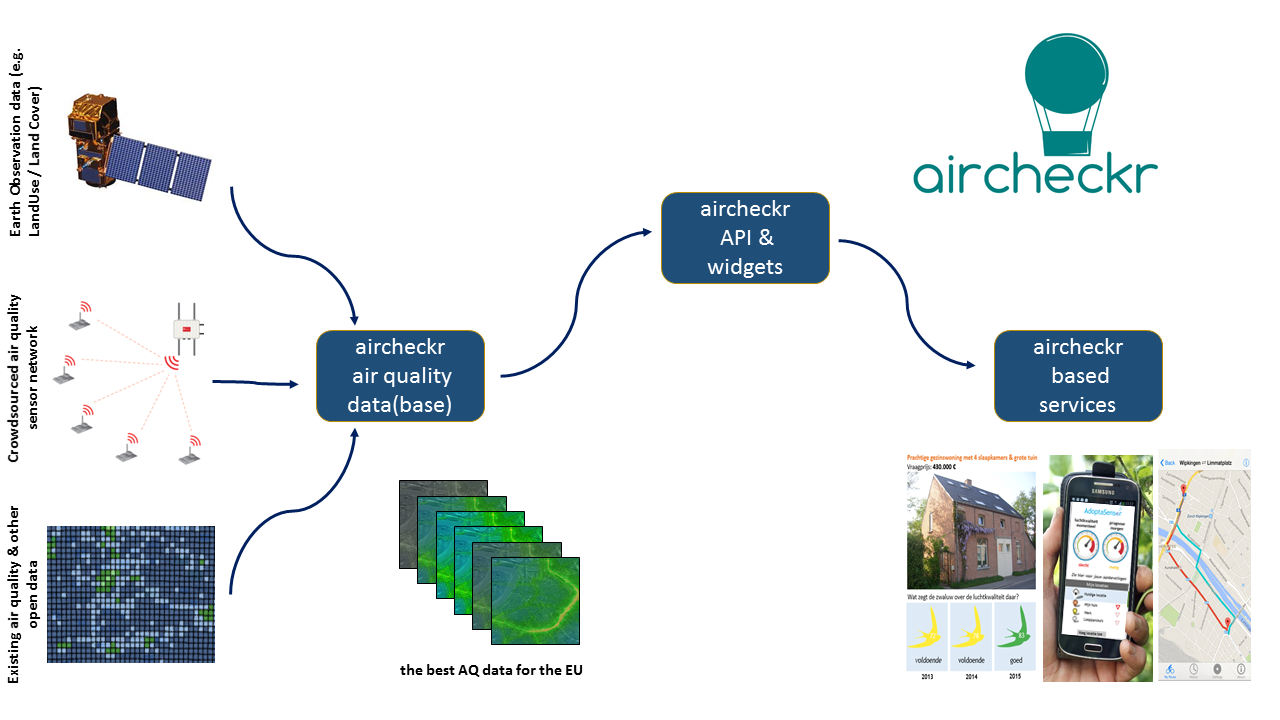
Objectives of the service
Air pollution is a silent killer (4 million deaths per year worldwide), but public awareness is very low. The available Outdoor Air Quality (AQ) data is too complex & coarse for personal use. Aircheckr brings the solution by creating & opening up the best available AQ data in the EU. The aircheckr AQ data is the result of intensive processing, where different existing AQ data are modelled and enriched with crowdsourced local AQ sensor data & Earth Observation derived contextual information. Aircheckr is application driven, geolocation-based & real-time (incl. forecasting and historical component). The data is easily interpretable & also include personal recommendations. Through several widgets and an API the data are available for developers that can integrate them in different applications (real estate, routing, ventilation automation, health, news & info). The data is open for private individuals and can be visualised in real-time on an interactive map.

Users and their needs
Aircheckr is focused on B2B (and B2G). Below the potential paying customers are highlighted:
- Real estate
- Holiday rental houses
- Navigation, location tracking & tours
- Sport/recreation services
- Health sector
- Informative applications
- Ventilation systems (home automation)
- Governments
- Research & environmental consultancy
All of them need AQ data to enhance their service/products. The specific needs depend. For the real estate market e.g., an aircheckr widget gives for each property for sale/rent at a real estate website a clear indication on the air quality today and of the last 3 years. It is a real asset to “jump out”. Air quality has the potential to become a new strong discriminating factor in the real estate. Clear information on air quality is possibly decisive information for visitors of a real estate website. People at the point of making a vital decision (“Where to live the coming 30 years?”) will for sure also consider the impact this choice has on their (and their children’s) health.
The City of Antwerp & Ghent are official users in the project. Moreover, a friendly user trial will be set up with the “real estate” and/or “informative application”.
Target area: EU, but starting with Belgium
Service/ system concept
Aircheckr answers the following question: “How to know the air quality now, right where I am and what does that tell me?” Aircheckr provides the best air quality data (e.g. on street level for Paul who is planning his running route). It is geolocation based (“right where I am”) & real-time (“now”). Moreover, aircheckr makes the data easy to interpret and gives personal recommendations (“perfect air for a run”).
The system architecture is schematised below. The aircheckr AQ data (base) are the result of intensive processing, where different existing AQ (and other open) data are modelled and enriched with crowdsourced local AQ sensor data & Earth Observation derived contextual information. Through several widgets and an API the aircheckr data are available for developers that can integrate them in different applications. The data are open for private individuals and are visualized in real-time on an interactive map.

Space Added Value
Aircheckr makes intensive use of 2 space assets: Earth Observation & Satellite Navigation.
In the aircheckr methodology, Earth Observation derived Land Cover maps play an important role. The Copernicus product “Urban Atlas” is providing pan-European comparable land use and land cover data for Large Urban Zones with more than 100.000 inhabitants as defined by the Urban Audit (305 in total). Recently, EEA has signed an agreement to produce an update of the Urban Atlas (reference year 2006), increasing the number of urban areas to all European cities with > 50.000 inhabitants. The Urban Atlas has a resolution that is 100 times higher than CORINE land cover, with a Minimum Mapping Unit (MMU) of 0.25 ha and a positional accuracy of +/- 5m. The extensive classification hierarchy will be used as input for the models and to enhance the sensor measurements with contextual information. This can include e.g. building density information, type of urban land use (commercial, industrial…), proximity of different types of roads / airports / green urban areas / forests, etc.
Satnav technologies will primarily be used to track the precise location of individual users accessing the aircheckr database through an API or widget. Moreover, the positioning of newly installed sensors is key for providing relevant data.
Current Status
The feasibility study started beginning June 2015 and took 6 months. The activities were mainly focused on following 3 tasks:
1. User and Stakeholder Analysis and Consolidated User Requirements
2. Definition of the Integrated Solution and Associated Services
3. Viability analysis
Final review was held on 11 December 2015. Both the technical as business aspects of the project were evaluated positively and the outcome of this study are a good basis for further work. A follow-on IAP demo project will be prepared.



